Win them with faith: Training tips for your fearful pooch!
There are the ‘social butterfly’ pets who greet every new situation with an excited tail wag. And then there are pets who feel overwhelmed by even a small stimulus. The fear they feel is not their fault. It is a cumulative effect of nature and nurture. The ‘fight or flight’ defense mechanism is turned up a few extra notches in fearful dogs.
 As challenging as training a fearful dog can be, it is worth the extra effort. However, don’t expect your pet’s personality to change completely. A jittery dog isn’t going to become the life of the party, but he can learn to become more relaxed and comfortable in the world.
As challenging as training a fearful dog can be, it is worth the extra effort. However, don’t expect your pet’s personality to change completely. A jittery dog isn’t going to become the life of the party, but he can learn to become more relaxed and comfortable in the world.
 Early warning signs of anxiety and fear
Early warning signs of anxiety and fear
Being in tune with your pet’s body language can help avoid him from becoming fearful. Spotting the early warning signs of anxiety and fear will help you take control before your pet becomes overwhelmed. By closely observing his reactions to different situations, you can learn about his triggers and how to address those.
There are obvious signs of fear, such as cowering, shaking, or running away. But your goal should be to prevent things from ever getting that bad. Be on the lookout for the not-so-obvious signs of fear, such as yawning, showing disinterest, panting, sniffing the ground, growling, or lunging.
Here’s how you should go about training a fearful dog –
![]() Be your pet’s best advocate
Be your pet’s best advocate
Fear can interfere with your pet’s ability to learn. Getting an anxious dog to listen to you can be a real struggle, as his focus is on the distraction. He may be way too consumed by fear to respond to you. Rather than attempting to train your pet when he is in a heightened state of fear, you need to respect his emotional state and help him cope by either removing him from the situation or modifying it appropriately. Make your pet’s emotional needs a priority. Training can wait until your furry friend has calmed down!
![]() Perils of /punishment-based training
Perils of /punishment-based training
Yelling or screaming at your pet, pushing him, or hitting him will not make him learn. Instead, it will make him even more fearful. A better option would be to ignore unwanted behavior and redirect it to something more positive. Rewarding and praising your pet during the training process will positively reinforce him.
- Reward with best quality treats
High-value treats are like currency for your pet. Use your pet’s favorite treats liberally during the training to reinforce positive behavior.
![]() Control your anger and his environment
Control your anger and his environment
If you’re offering your fearful pet his favorite treats and he refuses to eat them, pause and assess the situation. Is your dog distracted by another dog or person standing too close? If yes, move him away by a distance and provide visual barriers, such as bushes and fences. If it is a loud noise that is bothering him, move away. Refrain from training him around loud noises, for example – walk your pooch in a quiet park and not alongside a busy road. Is your fearful pet startled by a quick movement and thinks someone’s coming to get him? In such a case, provide visual barriers.
- Teach him the ‘look at that’ cue
Teaching a fearful pet to look at the world with wide-eyed excitement instead of fear is great. When you train your pet to respond to the ‘look at that’ cue, he learns that the world is not scary, which is very empowering.
- Teach Redirection
Redirection involves rewarding your pet for doing something other than his usual response. When redirecting, always continue to manage your environment. For instance, if another dog is standing too close to your pet, ask your dog to ‘look at that’. When your pet looks at the other dog, give him his favorite treat. Your pet will slowly learn that other dogs equal food.
![]() Build Confidence
Build Confidence
There are multiple ways to build your pet’s confidence. To begin with, chalk out a reliable routine so that life becomes more predictable. Next, teach him basic obedience behaviors like how to sit, stay, and touch to build his confidence. Finally, help your pet earn life rewards by using those behaviors to gain a sense of control over his environment. For example, ask him to sit before you put down his dinner dish.
- Controlled dog sports for health and happiness
Training for controlled dog sports like agility training is a great way to bolster your pet’s confidence. Only one dog and handler are allowed in the ring at a time, so the distractions are few, and the dog gets plenty of one-on-one attention from the trainer. Remember, your pet is not in it to compete but to experience facing new challenges. In agility training, your pet will learn to conquer obstacles like the seesaw and jumps, which makes him more confident about what he can handle.
![]() Say yes to nosework and no to being nosy!
Say yes to nosework and no to being nosy!
Nosework is a great activity to train your fearful pet. He earns to do something else instead of worrying, and he gets a chance to use his best sensory ability.
- Boon of behavioral modification
It is common among pet parents to unintentionally reinforce undesirable behaviors in their pets. For example – saying ‘good boy’ to your pet during a stressful situation reinforces his fearful behavior. You think you’re soothing him but actually, you are rewarding him.
![]() Decoding desensitization and counter-conditioning
Decoding desensitization and counter-conditioning
You can use your pet’s specific triggers to train him. You do this by creating positive associations for your pet with the stuff he finds scary. Expose him to these triggers at a level where he doesn’t react. It is known as keeping your pet below the threshold. F0r example – if your pet is scared of strangers, you should expose him to a stranger standing 20 feet away.
Once you have done this, you can pair the exposure with a delicious treat that your pooch loves. Once he looks relaxed and comfortable at that distance from the trigger, you can amp up the intensity a tiny bit and pair it with treats again. Slowly work up to the full-blown situation where the stranger stands right in front. Although this method is time-consuming, it’s super effective.
- Key of patience to open all locks
Don’t burden your fearful pet with unrealistic expectations. Proceed at a pace comfortable to your pooch. It helps to remember that fear interferes with learning, so it can take him longer than expected to master new behaviors.
Bringing changes and making your pet confident by reducing his fear is a slow and time-consuming process! Keep calm and carry on, the love and affection you’ll get will be worth the wait!


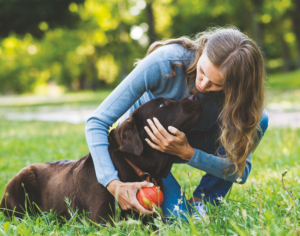 Be your pet’s best advocate
Be your pet’s best advocate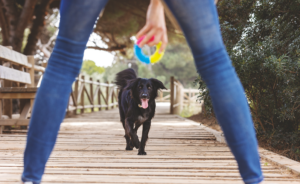 Perils of /punishment-based training
Perils of /punishment-based training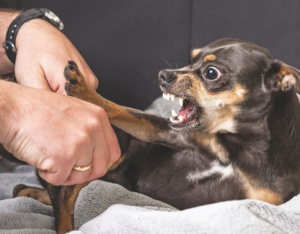 Control your anger and his environment
Control your anger and his environment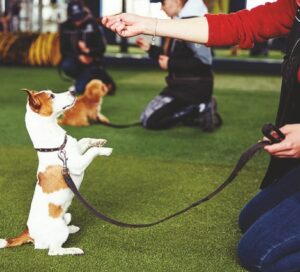 Build Confidence
Build Confidence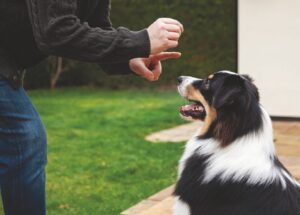 Say yes to nosework and no to being nosy!
Say yes to nosework and no to being nosy! Decoding desensitization and counter-conditioning
Decoding desensitization and counter-conditioning